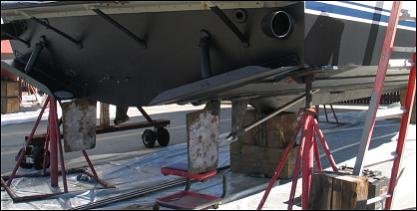Good thoughts on dual keel design!
Yup...
Back in the day of high powered, hulky, fast, full planning Twin-"Screwers" [LOL], when fuels were still in the cents per gallon cost category, the top boat manufacturers all had fairly similar bottom designs.
Only reason I can see having the dual keel design would be for prop protection... and rudder stability/protection if skegs were fully extended. Dual keels would probably make the boat track better too and may place additional damper on the roll charistics.
That said: I've always been super duper careful to not go aground as well as to keep keen eye out for flotsam while on fly bridge 99% of the time under power.
So... the effort and cost of installing the keels as well as the potential for reduced speed and increased fuel usage just don't make sense in comparison to simply being super duper careful. One thing is for sure. Even if the dual keel design became a reality on our Tolly - I'd still be super duper careful regarding grounding and flotsam. Additionally, the $$$ cost of correctly installing dual keels would probably way exceed the cost of prop, shaft, rudder repair if a mistake were to happen
We leave in a couple hours for weekend aboard our boat! 2020 has not enabled us to be aboard very often. As time progresses I plan to try and not recall this year with Covid-19 pandemic as well as economic shut down and our areas of Norcal so much in flames that it produced over 40 days of so much smoke in air that most stayed home with all doors and windows closed tight! Yesterday was the first clear day here in 30 days [some times 100 yard visibility was the best all day]. I hear that smoke in air may return in this area [from other ongoing west coast fires] beginning of next week. We were lucky that our heavily forested area has so far not become just another fire statistic!


